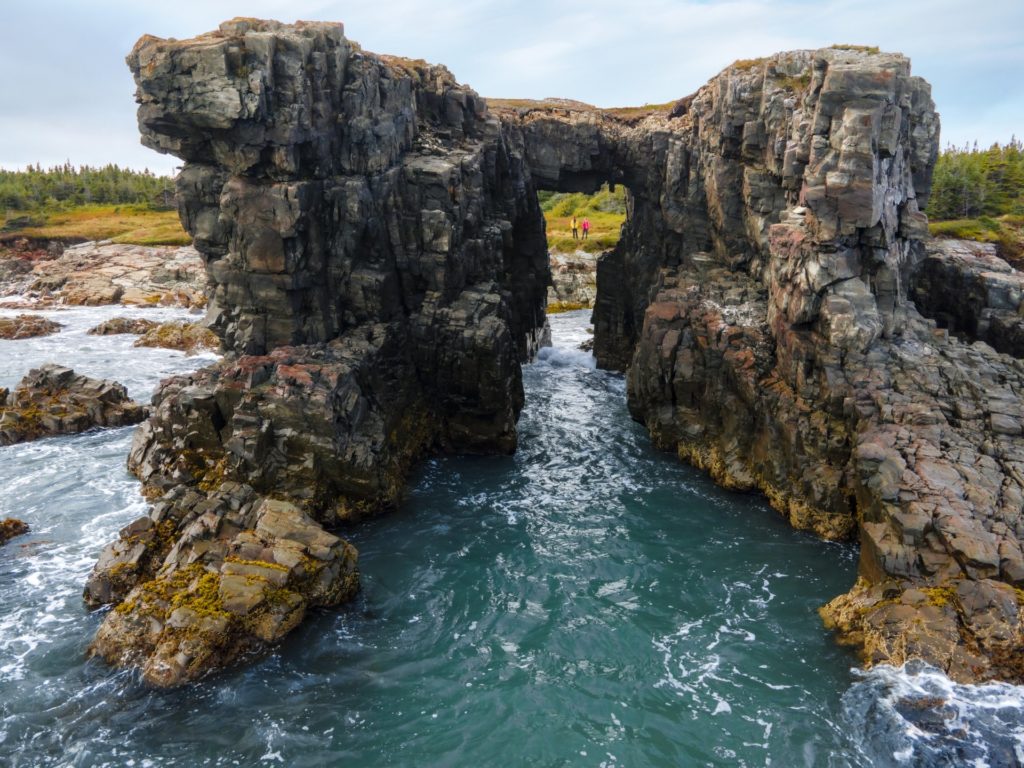
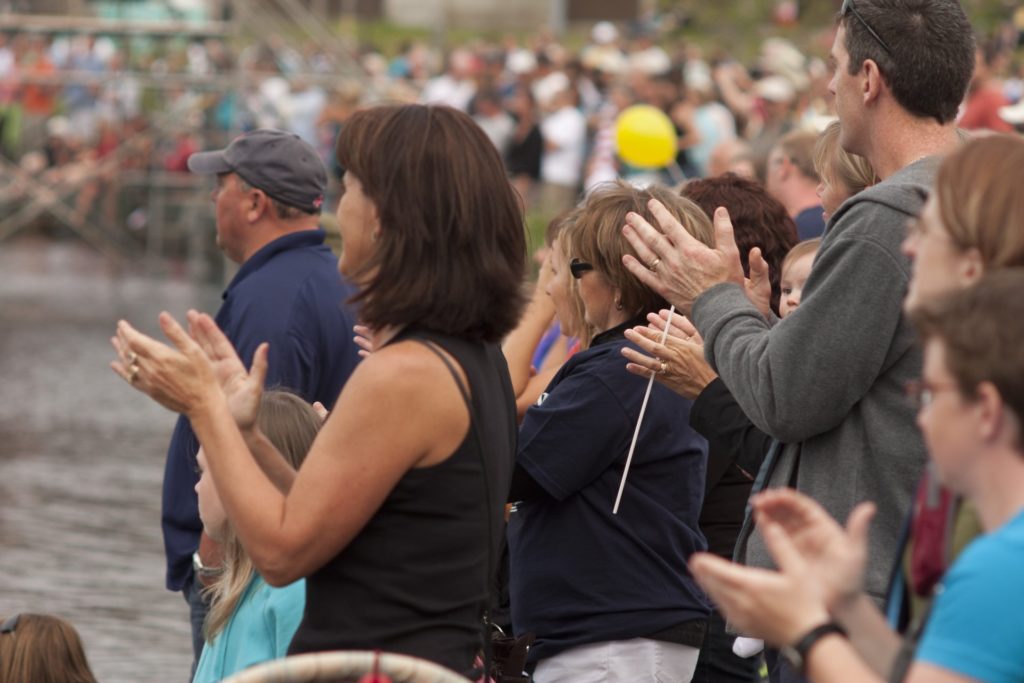
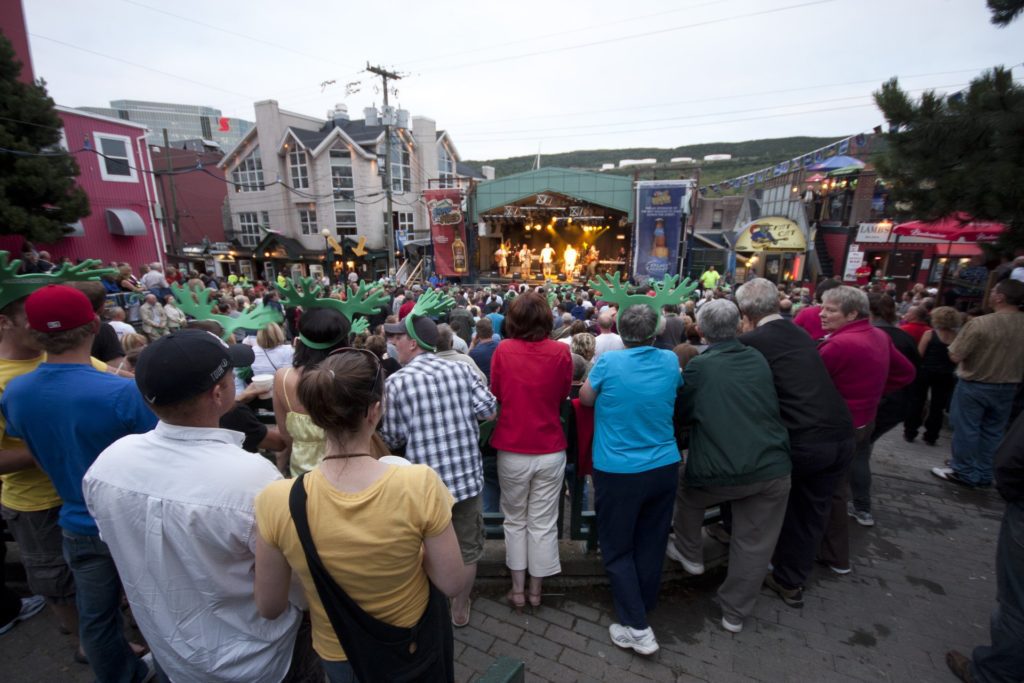
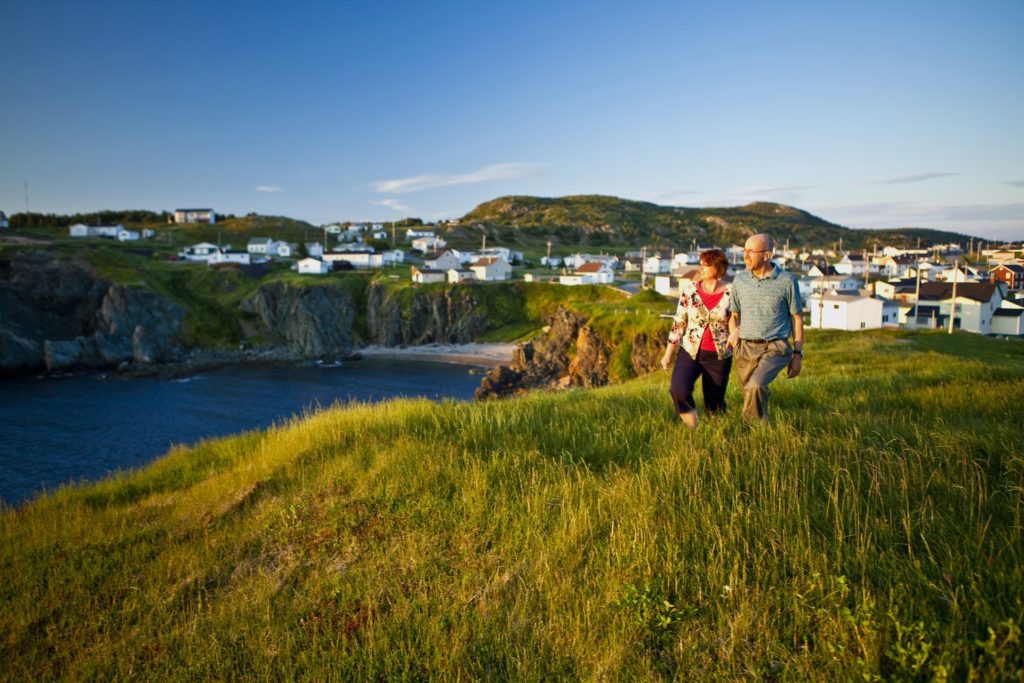
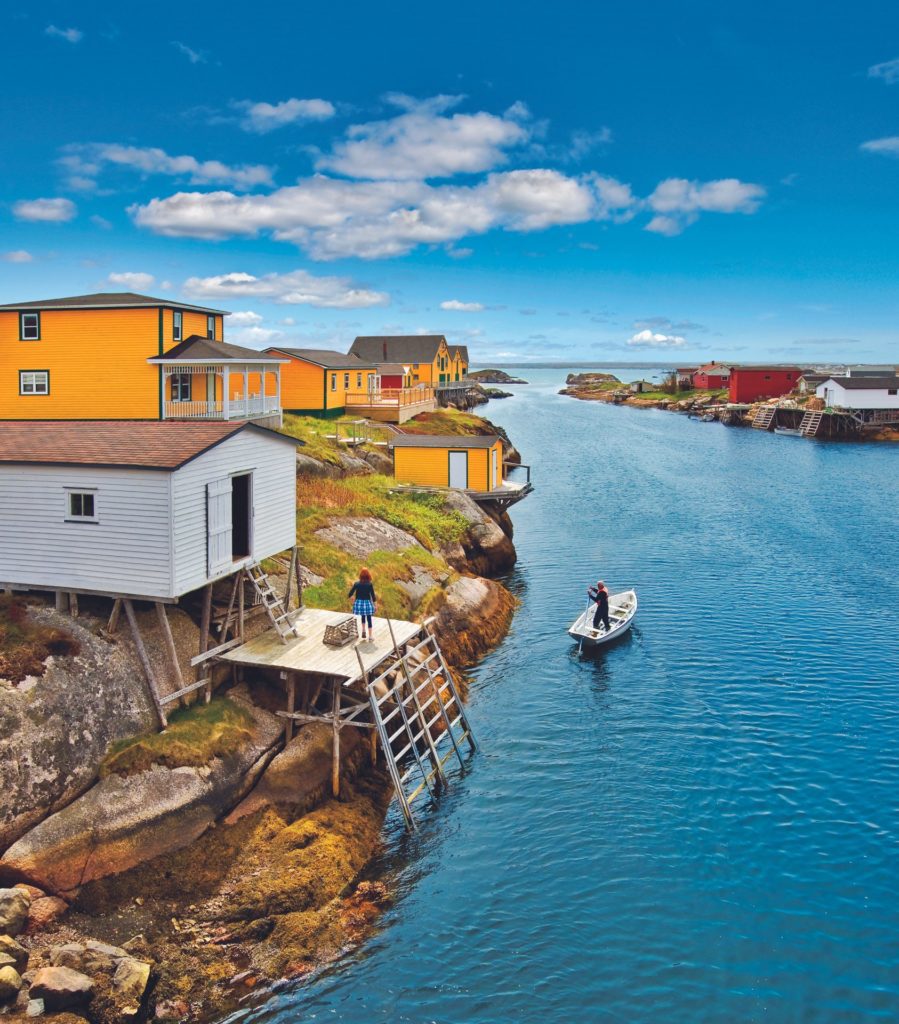
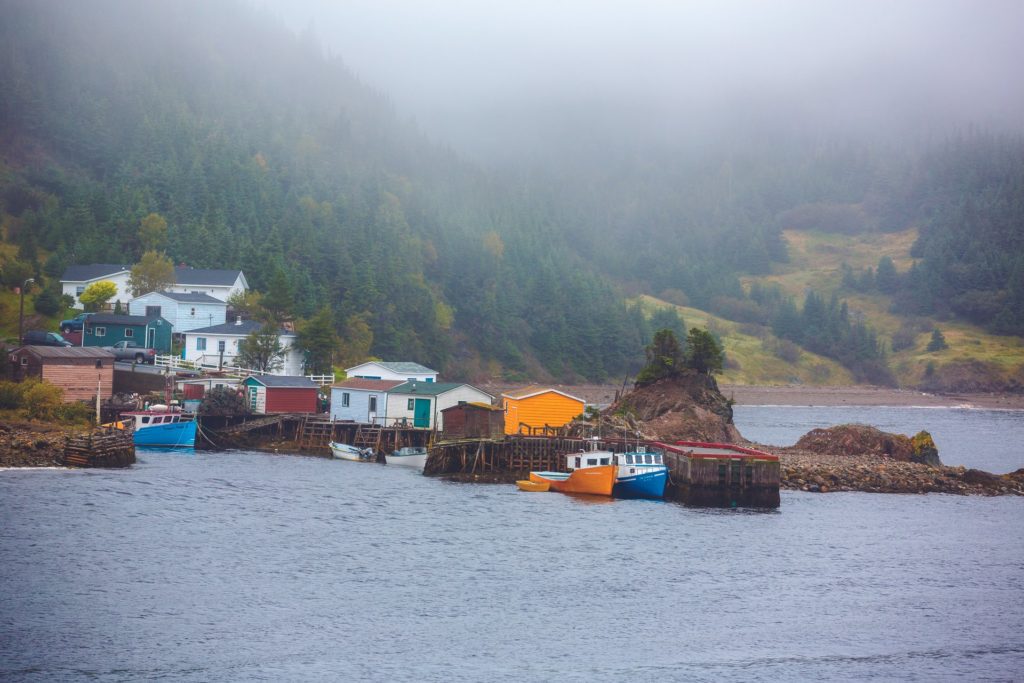
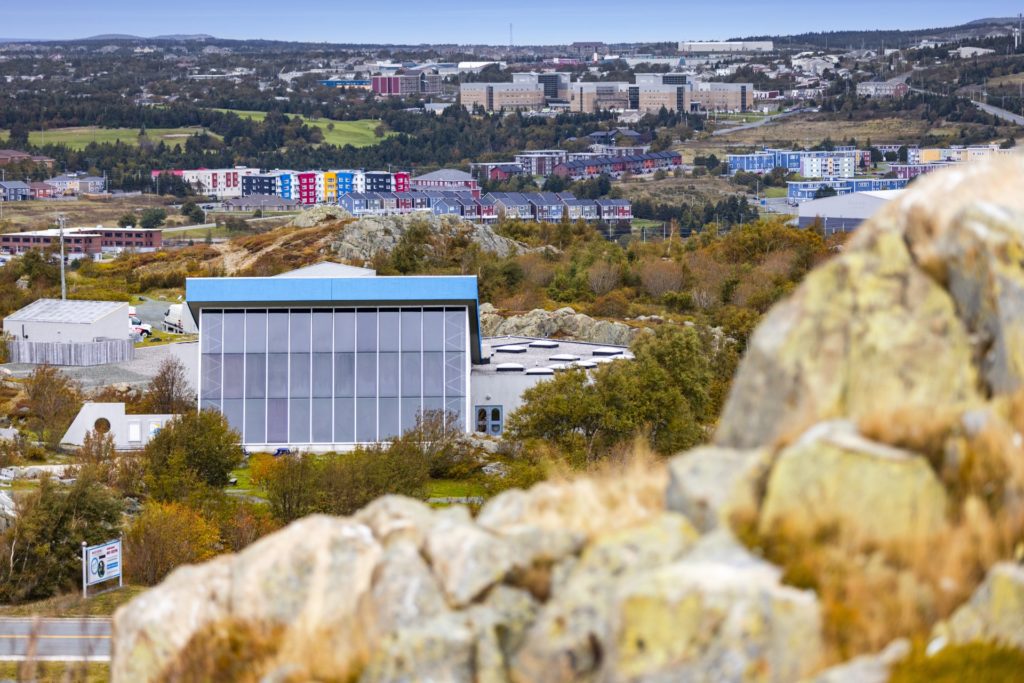
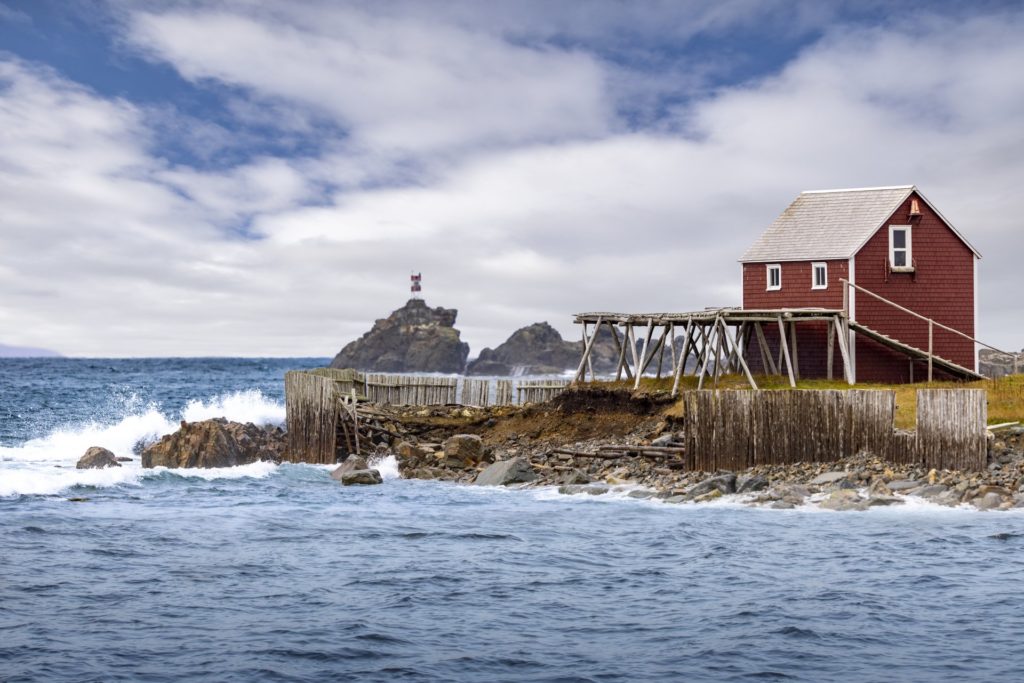
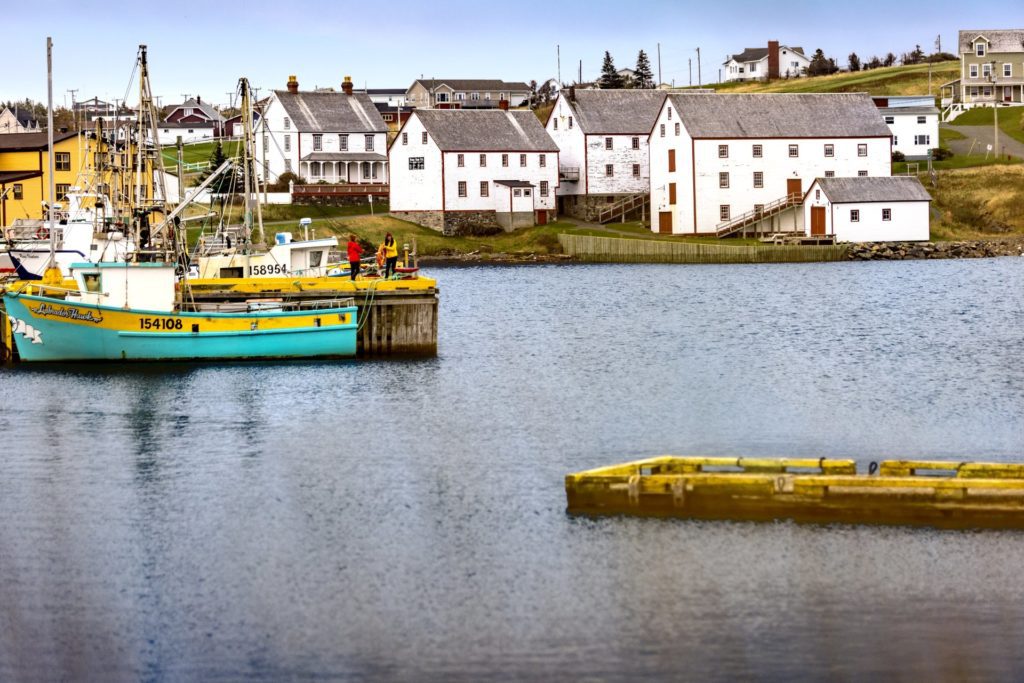
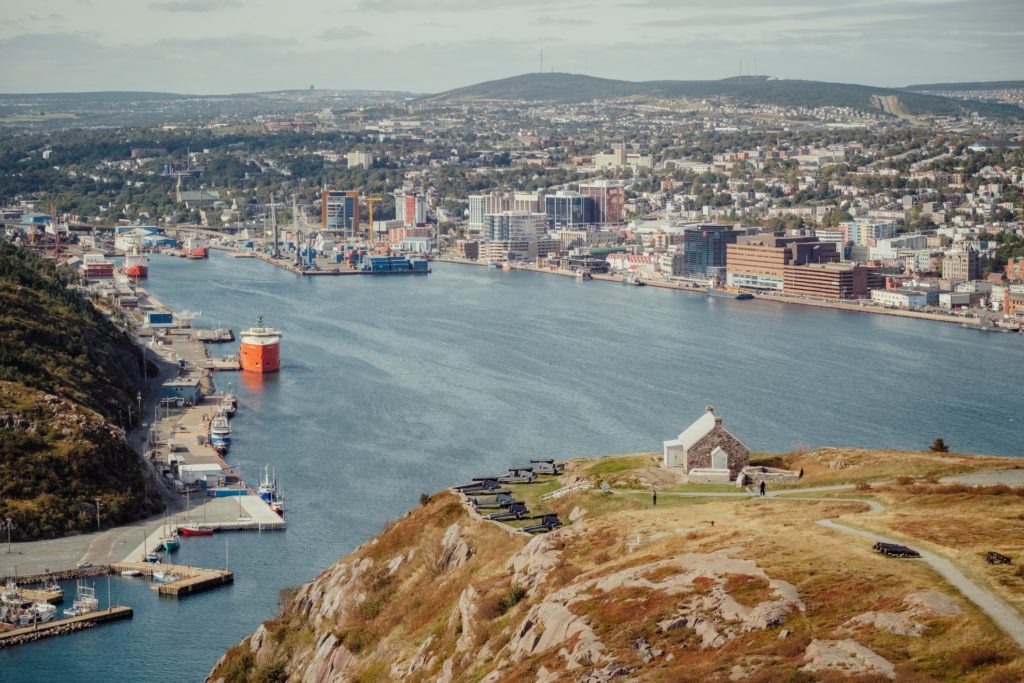
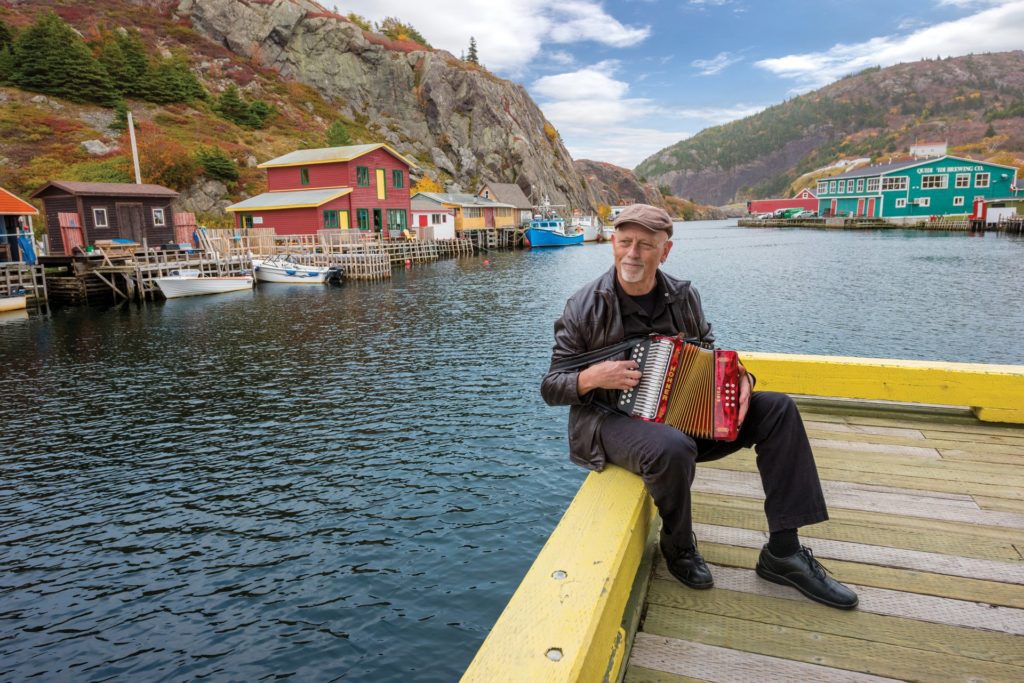
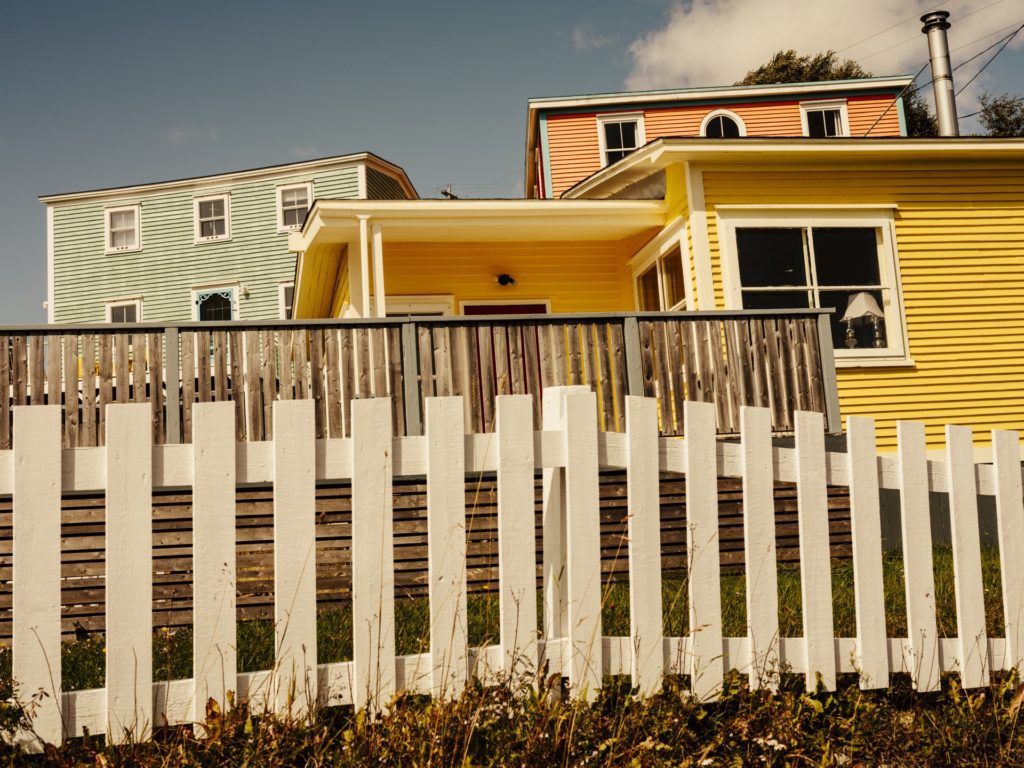
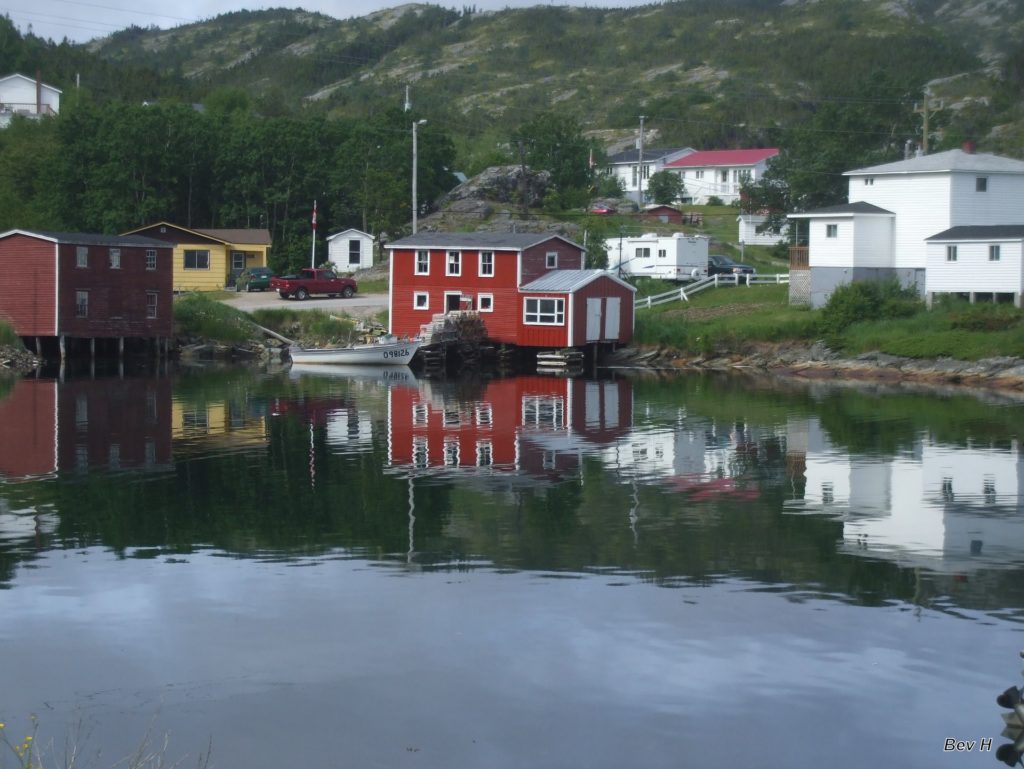
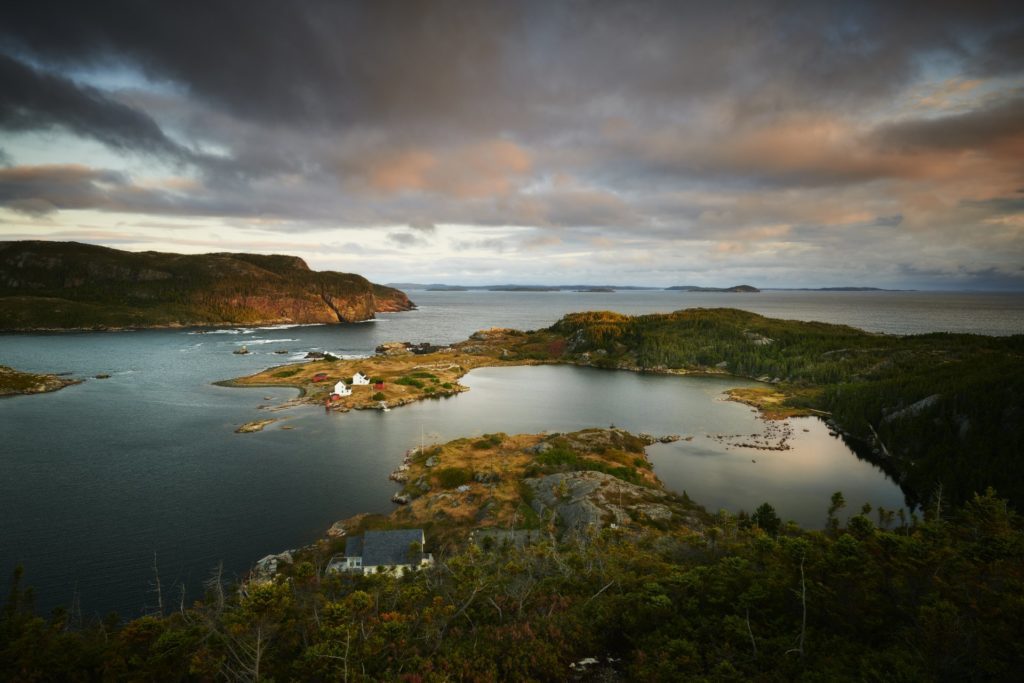
Our Communities
Targa Newfoundland is a rally adventure like no other. Where else can you experience places like Leading Tickles, Random Island, Conception Bay, Salvage, Witless Bay, and Happy Adventure? You’ll be exposed to many breathtakingly beautiful places with great stories to tell about pirates, explorers, seafarers, and even giant squid. Some of these communities are among the oldest European settlements in North America dating back to the 1600s.
Targa Newfoundland will take you from St. John’s, the oldest and easternmost city in North America, along thousands of kilometres of winding, challenging roads across the island of Newfoundland. Among the legs, you’ll race through the streets of Gander, which took in thousands of international passengers diverted to the airport there because of 9/11, and the historic town of Brigus, one of the favourite stages of past participants. You’ll follow the rugged coastline and head through dozens of charming towns and outports that will welcome you with open arms. You’ll be inspired to return.
You will be moving too quickly to appreciate these scenic and historic places during the race, so you’ll want to explore them at a more leisurely pace after your pulse returns to normal. We’ve compiled some information for you about the fascinating communities hosting Targa this year from their websites, the Government of Newfoundland and Labrador and other sources.
Targa wouldn’t be possible without the generosity and enthusiasm of our communities and their people.
The following is a day-by-day description of each community along the route:
Day One and Two
St. John’s
St. John’s, our province’s capital, is the perfect combination of big-city luxury and traditional small-town charm. Though only 500 or so years old, it is one of the oldest and most easterly cities in North America, and has become a rare destination full of character and charisma, with a contemporary, sophisticated edge.
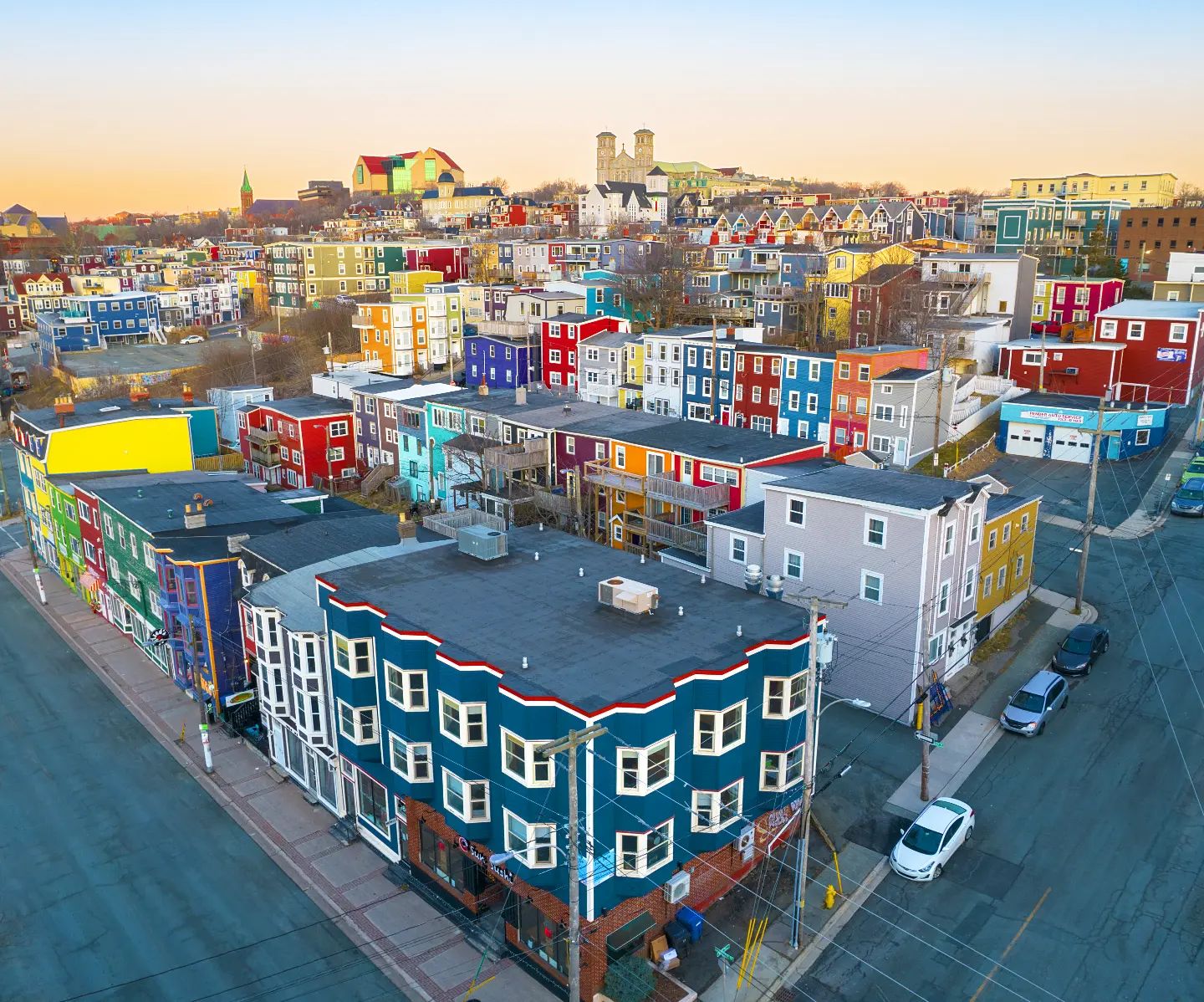
With a population of about 210,000 people in St. John’s and surrounding area, it is the largest metropolitan area in the province. St. John’s is known for its jellybean rowhouses, Victorian architecture, Signal Hill where Marconi received the first transatlantic wireless message in 1901, Quidi Vidi fishing village, and famous George Street, lined with pubs and bars from end to end. The city offers a wide variety of dining, cultural, and shopping options. St. John’s is also a short drive from the rugged cliffs of Cape Spear, the most easterly point of North America and location of the Cape Spear Lighthouse National Historic Site.
Learn more: St. John’s – Newfoundland and Labrador, Canada
Day 3
Witless Bay
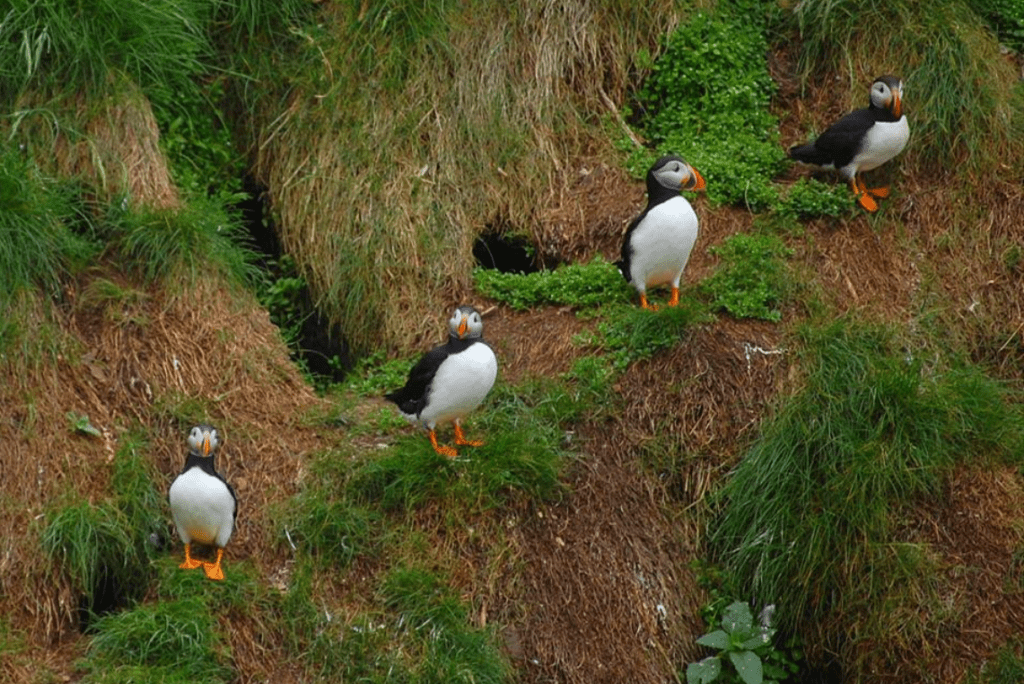
Photo credit: newfoundlandlabrador.com
Located on Route 10 as a part of The Irish Loop, Witless Bay is a small, scenic, traditional Newfoundland outport community that offers an abundance of natural tourism. Icebergs, whales, and incredible bird colonies are just some of the attractions this scenic area has to offer. This outport, which dates back to the 1600s, is home to the Witless Bay Ecological Reserve, which is a must see.
The largest Atlantic puffin colony in North America is here, with more than 250,000 nesting pairs. Hiking, camping, and fishing can be found along the East Coast Trail. Sea kayaking is very popular in the Witless Bay area. For the amateur looking for adventure, there is a privately owned Zodiac boat tour operator in Witless Bay as well as several businesses offering boat and sea kayaking tours in the area.
Learn more: Bay Bulls & Witless Bay – Newfoundland and Labrador, Canada
Bay Bulls

Photo credit: newfoundlandlabrador.com
The historic town of Bay Bulls is the Gateway to the Irish Loop. Located in a sheltered bay, it has been home to many fishermen and a strategic location in early times as it is located just a short distance from the capital, St. John’s. Bay Bulls first appears on a 1592 map drawn by Thomas Hood. The exact origin of the name is a mystery. One theory is that it was originally named Bay Boulle by Jersey fishermen.
Another suggestion is that it comes from the common Dovekie Bull-Bird which can be found in the area. The southern shore is teeming with more birds and whales than you could ever hope to count. Each spring and summer their migration takes them to nesting and feeding grounds just offshore. At the right time of year, you may also encounter icebergs as these natural wonders drift by on their journey south.
Bay Bulls and Witless Bay are home to tour operators ready to lead you out on the ocean – on well-equipped and comfortable boats, open Zodiacs, or in sea kayaks – to watch for whales gathering and feeding along the coast.
Day 4
Placentia

Photo credit: Town of Placentia
Over 350 years of history has borne a place where its bounty of natural wonders are matched only by its richly storied heritage and lush cultural landscape. The original 16th century French settlers got it right when they named this place “Plaisance” meaning “pleasant place.” Discover for yourself what has drawn people here for centuries. For many, it begins with a breath-taking drive along the rolling coastline of forested hills and sheltered bays – the Seven Islands lookout is not to be missed.
Kayakers and water enthusiasts flock to the protected inlets and sleepy coves. Boaters and sailors glide through storied waters, gaining a perfect prospect of manmade and natural wonders. Families and romantics alike enjoy long strolls on the picturesque oceanfront boardwalk, while the more adventurist hikers take advantage of a well maintained network of trails around historic fortresses and scenic panoramas. With its famously commanding view of Placentia and surrounding coastline, Castle Hill offers a unique national historic site experience.
St. Bride’s

The charming fishing outport of St. Bride’s is located on the picturesque Cape Shore. The community is named after Saint Brigid Of Ireland, as original inhabitants of St. Bride’s were Irish Catholic. Situated about 170 km southwest of St. John’s, this community has a population of approximately 300 people. In addition to fishing, St. Bride’s has a long tradition of sheep farming. St. Bride’s is just north of Cape St. Mary’s, a wonderland for birdwatchers and explorers alike.
Thousands of gulls, razorbills, common murres, black-legged kittiwakes, northern gannets, and double-crested and great cormorants nest here. A vantage point overlooks a magnificent sea stack and offers an opportunity to photograph seabirds, including the largest nesting colony of gannets in Newfoundland (30,000) and the third largest colony in North America. This captivating area is one of seven protected seabird ecological reserves. Its natural beauty makes it perfect for nature walks and family adventures.
Gander
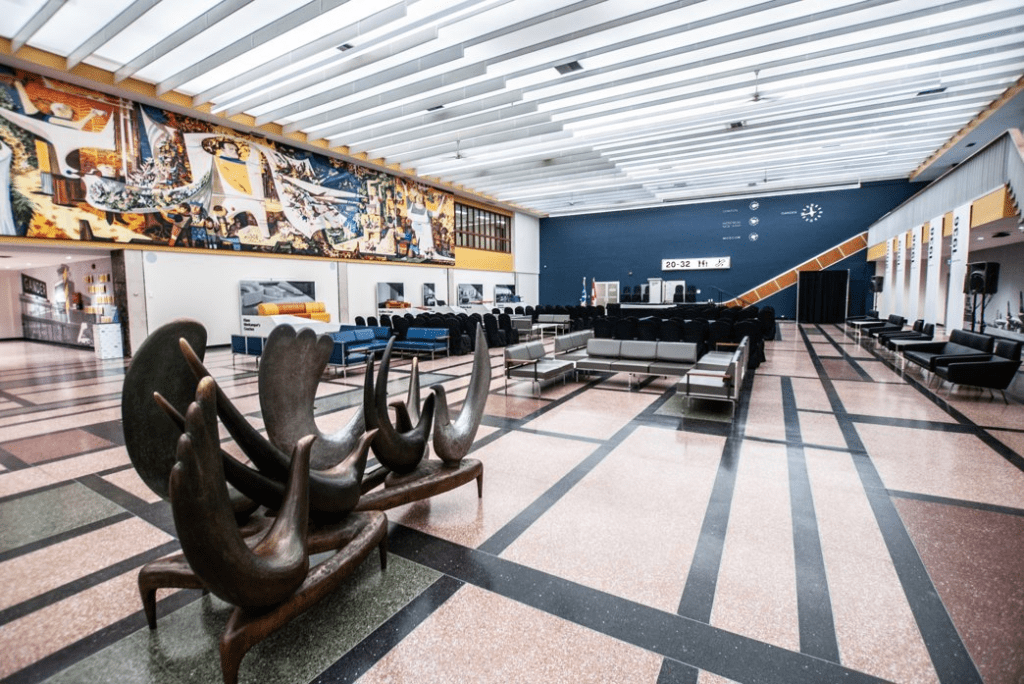
Photo credit: Town of Gander
The town of Gander was once known as the “Crossroads of the World” due to its perfectly positioned airport. Once the largest on earth, with runways big enough to land the space shuttle, it was a strategic location for refuelling and a bustling centre during wartimes.
It was this very airport that made this community the focal point for human kindness and generosity as highlighted in the hit Broadway play “Come From Away.” Gander’s airport hosted 38 planes, carrying about 6,600 passengers, after they were forced to land in Canadian airspace after the terrorist attacks on Sept. 11, 2001. The Targa stage through Gander is named the Come From Away Memorial Stage.
Gander has a population of approximately 12,000 people and is also a service centre to surrounding communities and approximately 80,000 people. The town is home to Gander International Airport and 9 Wing Canadian Forces Base (CFB) Gander, which includes 103 Search and Rescue Squadron.
Day 5
Glenwood
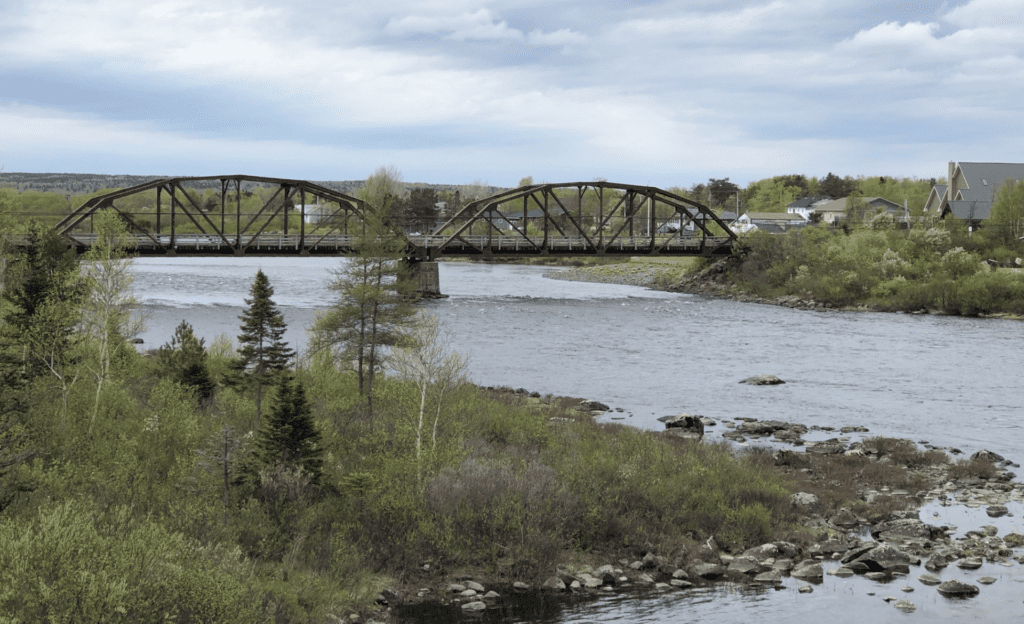
Glenwood, the second oldest inland community in Newfoundland, is located in Central Newfoundland about 20 km from Gander. Glenwood is a playground for the outdoor adventurer. Surrounded by natural beauty, the town hugs the shoreline of the mighty Gander River and Gander Lake. The river is one of the world’s best Atlantic salmon fishing destinations. The vast boreal forest attracts hunters from far and wide. Nearby is Mount Peyton, a favourite attraction for tourists. Landmarks include the Trestle, Queen Elizabeth Bridge and the water tower. About 700 people call Glenwood home.
Pleasantview
Pleasantview is a small fishing community situated near the shore of South Arm off Notre Dame Bay. To reach Pleasantview, follow Highway 350 north from the Trans-Canada. Pleasantview is home to about 50 people.
Point Leamington
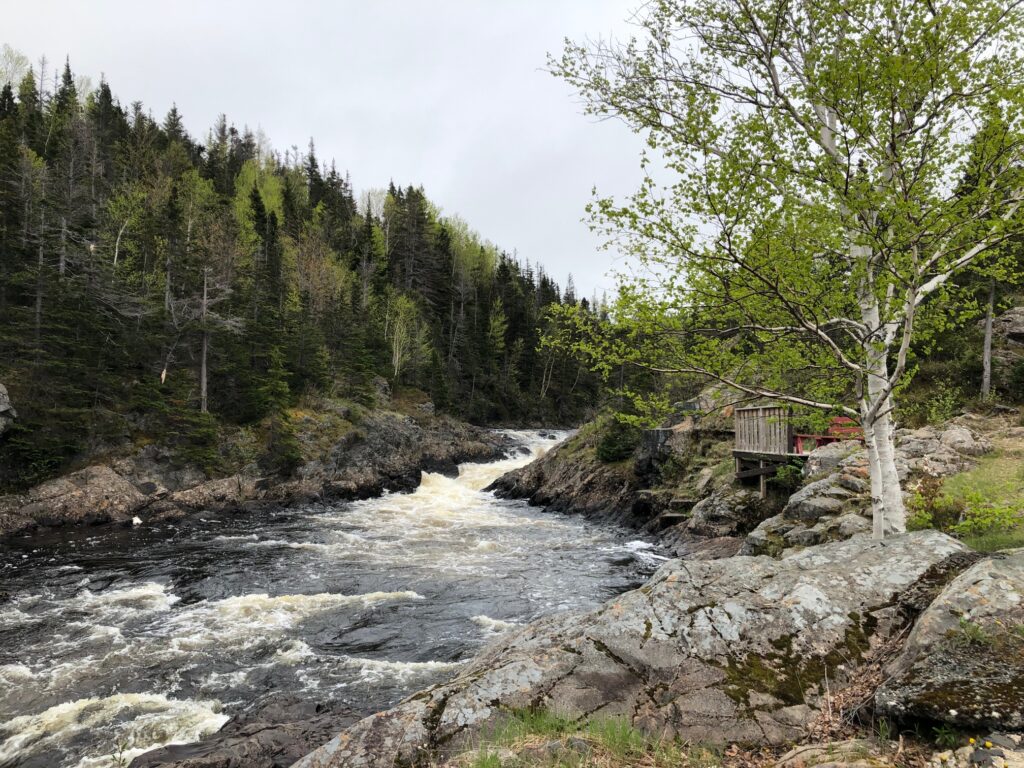
Natural beauty abounds in this area. For those who love the outdoors, Point Leamington has much to offer in the way of sport salmon fishing, boating, hiking, hunting, or snowmobiling in winter. For a relaxing drive “off the beaten path”, Point Leamington offers scenic views, relaxation and friendliness to all visitors. A couple of local attractions include the marina and Rowsell’s Hiking Trail.
Leading Tickles
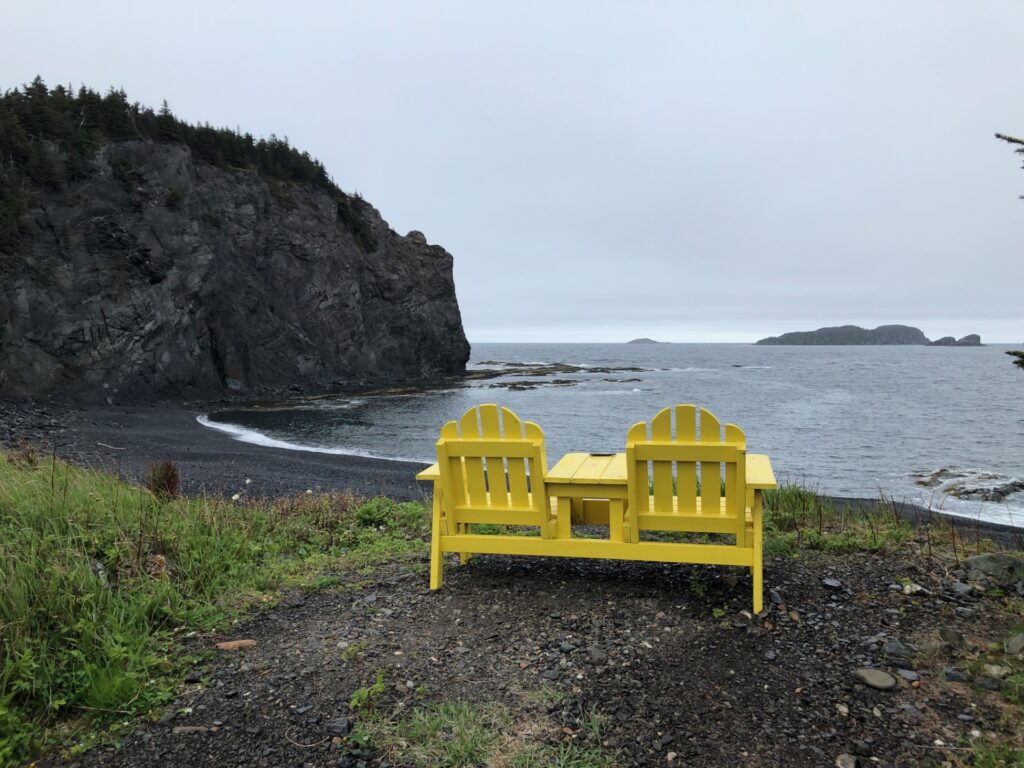
The name of this community alone will put a smile on your face. Leading Tickles has a population of 296 people. It is a fishing community on the northeast coast of Newfoundland. Many of the residents work in the fish plant in the summer months. Local fishermen catch mainly cod, snow crab, and lobster, with some mackerel, herring, squid and capelin when regulations permit. Tourism is a big draw to this beautiful area in the summertime. The area boasts three beautiful beaches, hiking trails, and camping. Area cliffs and lookoffs provide views of whales as well as icebergs in spring and early summer.
Glovers Harbour
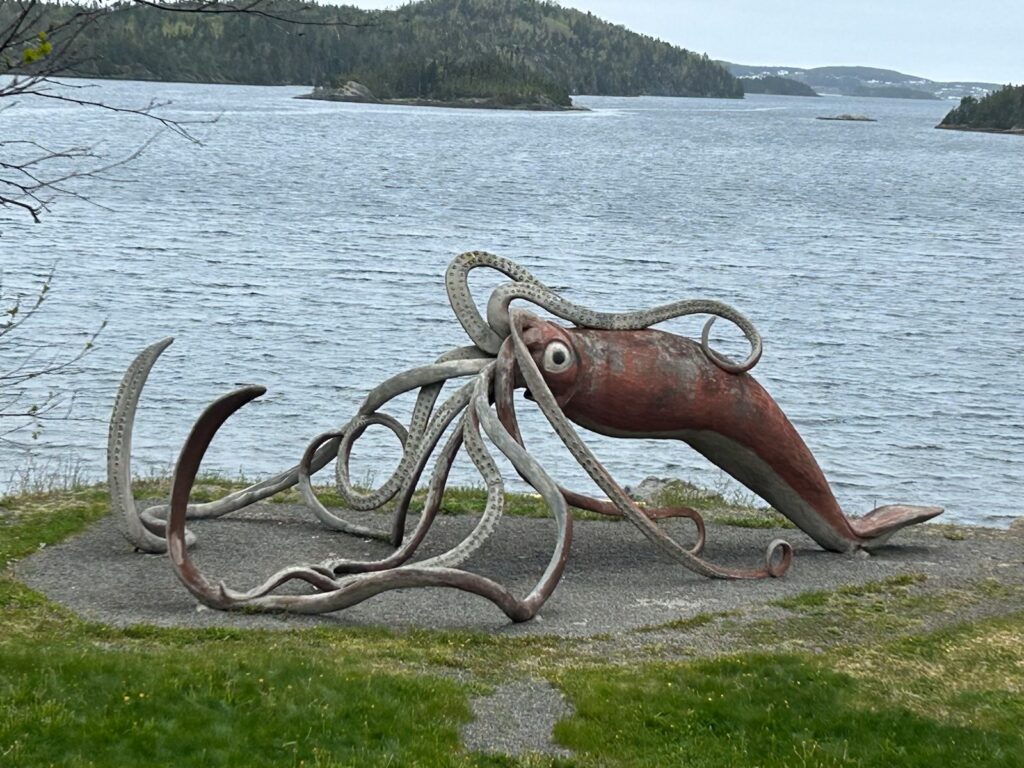
Glovers Harbour, formerly known as Timble Tickles, is famous as the Home of the Giant Squid. In 1878, a 55-foot-long giant squid washed ashore there and was subsequently recognised as a world record by Guinness. Glovers Harbour has a small heritage centre and “life-sized” sculpture dedicated to the giant squid.
Located in Notre Dame Bay on the northern coast of Newfoundland, it was settled in the second half of the 19th century. Glovers Harbour has remained primarily a fishing village throughout its history.
Appleton

Photo credit: Town of Appleton
First settled in the late 1800s after a lumber mill started operations there, the Town of Appleton is located about 15 minutes west from Gander. Located on the Gander River, there are beautiful views and lots of opportunities for exploring the outdoors. You can enjoy a beautiful sunset against the water as people fish or you may even see the dragon boats training.
Running through the centre of Appleton is the Trans-Canada Trail, which you can walk, ski, snowmobile, or drive your ATV on. The Riverfront Peace Park features many important historical objects and written histories from Appleton’s past, including a four-metre piece of steel from the Twin Towers donated to the town for its role in taking in passengers from flights diverted after the 9/11 attacks in 2001.
Day 6
Eastport
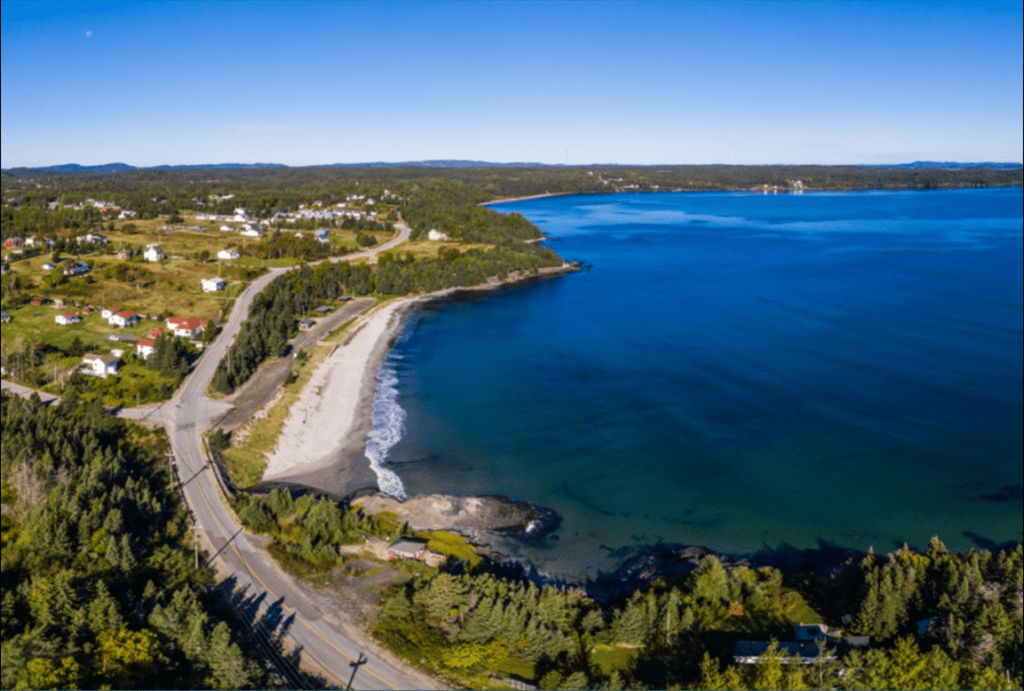
Photo credit: newfoundlandlabrador.com
Eastport is a popular vacation destination on the island of Newfoundland. Pulling visitors from all corners of the globe, Eastport embodies what Newfoundland outports are famous for: startling coastlines, culture, history, entertainment and a welcoming environment second-to-none. This gorgeous area in Central Newfoundland features sandy beaches, spectacular views, and hiking trails. Eastport (population 501) is home to the world class Beaches Arts & Heritage Centre, host to many well-known local, national and international artists, writers and musicians. Its sandy beaches, dramatic seascapes, hiking trails and majestic boreal forest, teeming with wildlife, provide exceptional opportunity for photography, beachcombing, hunting, berry picking – you name it.
Ranging from rugged coastal trails to leisurely strolls along beaches and through historic communities, the Damnable Trail network on the Eastport Peninsula and Glovertown has a trail for every hiker. The trails were developed largely from the remnants of old walking trails and hauling paths forged by the first settlers to the area. Eastport is also known as the “Festival Capital of Newfoundland” with literary, performing arts, and music events.
Happy Adventure
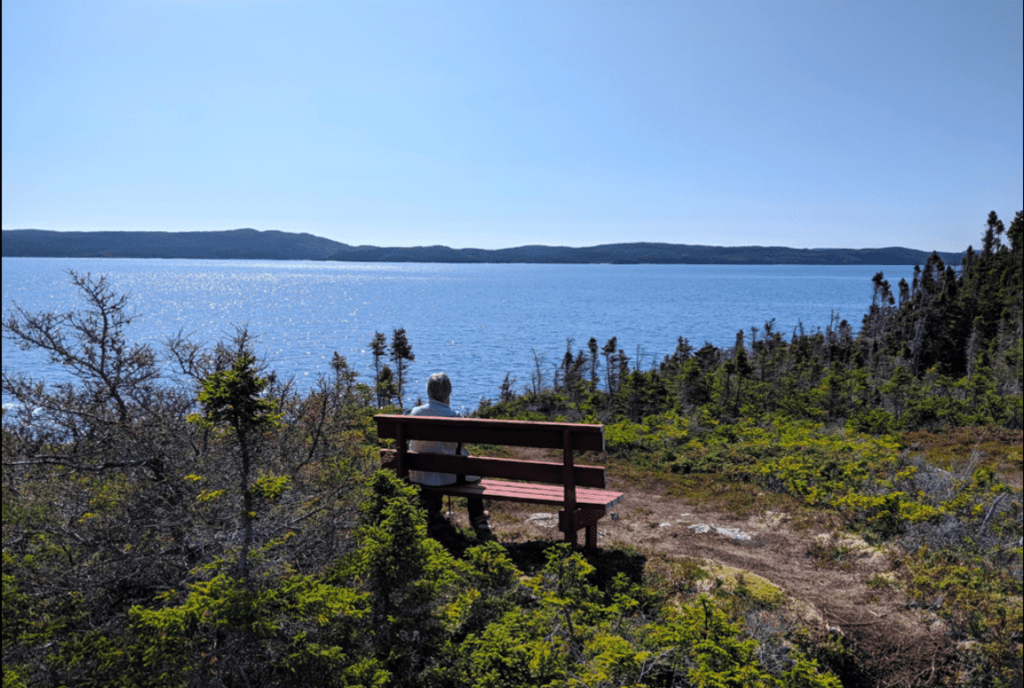
Photo credit: newfoundlandlabrador.com
There are three possible origins for the name of the small outport Happy Adventure, which was first referenced in 1817. Some say it reflects the happiness of the first settlers in finding such a welcoming environment. Another theory is that the community was named to commemorate a ship belonging to 17th-century pirate Peter Easton. Still others suggest the community was named by George Holbrook, a British Admiralty hydrographer. Holbrook surveyed Newman Sound in 1817 and sheltered in one of Happy Adventure’s coves during a storm.
Happy Adventure boasts boat tours, public boat launches, accommodations, dining (Chucky’s Wild Game & Seafood Restaurant), a seafood processing plant and a place of worship. And for those with a creative soul, check out an evening of Palette Vino, with artist-in-residence Brenda Matchim.
Salvage
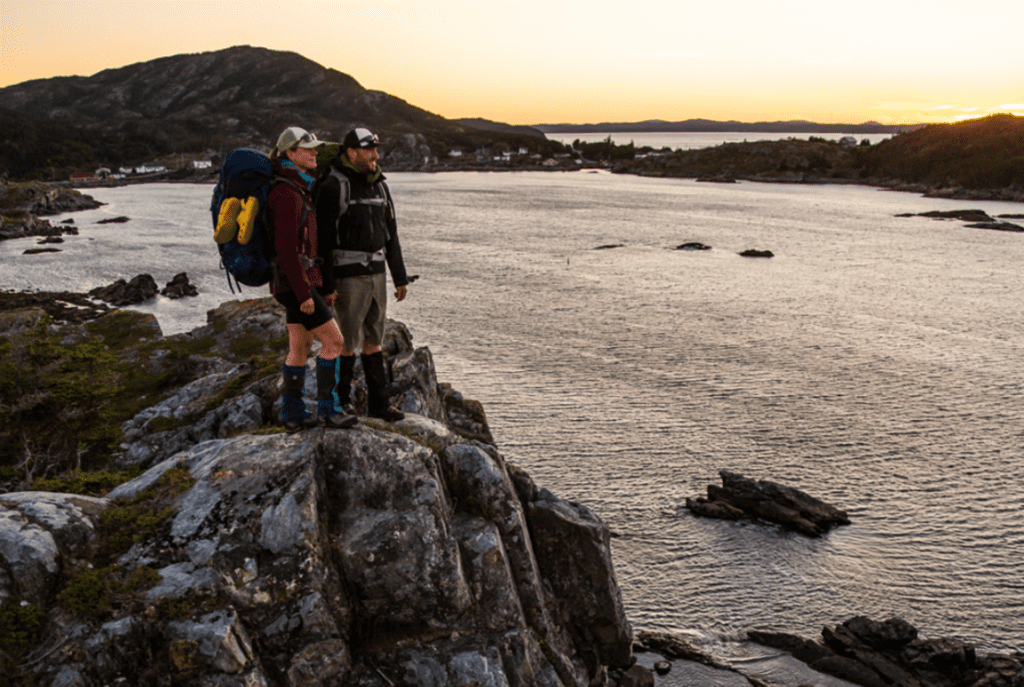
Photo credit: newfoundlandlabrador.com
Saltbox houses, red ochre stages, and St. Stephen’s Church, which was erected in 1859, are just some of the things you’ll see and experience in what may well be the oldest inhabited fishing village in North America. Salvage (population 124), perched on the rugged coastline of Bonavista Bay, is one of the most picturesque communities on the Eastport Peninsula.
With origins dating back to the late 1600s, today Salvage remains a working outport, focused on the fishery. It is most known for its red fishing stages and coastal hiking trails. Still a bit of a hidden gem, it has become a favourite for couples and families alike with its vacation rentals, fresh seafood, and genuine people.
Located literally at the end of the road, Salvage is the final community in an area known as The Road to the Beaches. This broader area features two sandy beaches, cultural and heritage experiences and endless opportunities for exploration in Terra Nova National Park. The name “Salvage”, which rhymes with “age”, is thought to have originated from the Spanish term “Salvaje” meaning wild, untamed, or savage.
Burnside

Burnside, the northernmost settlement on the Eastport Peninsula, was named for a devastating forest fire that swept through in 1912. Burnside originally consisted of two communities, Squid Tickle and Holletts Cove. It was originally settled by people from Salvage and was well situated for lobster, salmon, herring, mackerel and squid fishing. Fewer than 100 people currently call Burnside home. There is a port with ferry service to the isolated island outport of St. Brendan’s. Each summer the Burnside Archaeological Museum delivers insight into the indigenous groups who once inhabited the coastline.
Port Blandford

Photo credit: Town of Port Blandford
Port Blandford is a beautiful little community located on the east coast of the island of Newfoundland. Nestled in the bottom of Clode Sound, Bonavista Bay, Port Blandford boasts natural scenic beauty and activities to suit any tourist or resident alike. Surrounded by dense boreal forest and bordered by three salmon rivers, Port Blandford has a relaxing and calming atmosphere. Here in Port Blandford you are sure to find the same hospitality and kindness that many travellers of over 100 years ago experienced.
The first significant development of the community happened in 1892 with the building of the railway and the installation of a wharf at Clode Sound to accommodate a coastal steamer for Bonavista Bay to facilitate travellers, carry freight and increase trade. The first national park in the province (Terra Nova National Park) was established on the border of the community in 1957 and features campgrounds, picnic parks, and hiking trails.
With attractions such as Terra Nova Golf Resort, which includes a championship 18-hole golf course and a nine-hole course, great salmon fishing, and The Newfoundland T’railway, Port Blandford has become a tourism destination.
Clarenville

Photo credit: Town of Clarenville
The Town of Clarenville is the stopover point for two nights of Targa Newfoundland. Nestled in the beautiful Shoal Harbour River Valley, Clarenville is blessed with an abundance of natural beauty. It is located adjacent to the Trans-Canada Highway about 180 km west of St. John’s and 142 km east of Gander.
Incorporated in 1951, the town has grown into a prominent community and service centre for the region with a population of over 6300 people. Boasting a diverse and vibrant economy, it offers well-established business infrastructure and a wide range of support services catering to the needs of residents of Clarenville and surrounding areas as well as area visitors.
As a major service centre, Clarenville has facilities, infrastructure, programs and services comparable to any major centre while maintaining a rural pace. Clarenville boasts several hotels, motels, inns, restaurants, businesses, and shops. Attractions include the town’s event centre, a state-of-the-art facility which offers sporting and culture events, a marina, sports fields, and hiking trails.
Day 7
Weybridge
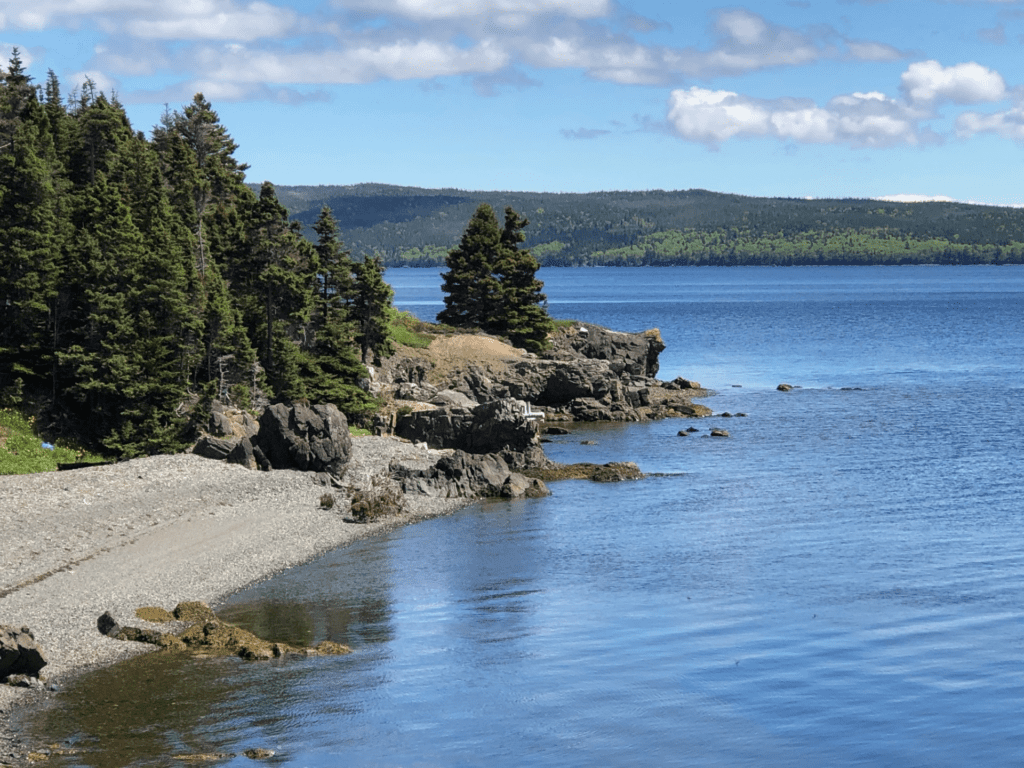
Once known as Bald Nap, Weybridge is located on Random Island in Trinity Bay. The island’s first permanent settlement was founded in the 1760s. The island’s main industries for over 100 years were fishing, shipbuilding, mining and sawmilling. Random Island was connected to the island of Newfoundland when a causeway was built in 1954 linking it to the town of Clarenville.
Hickman’s Harbour
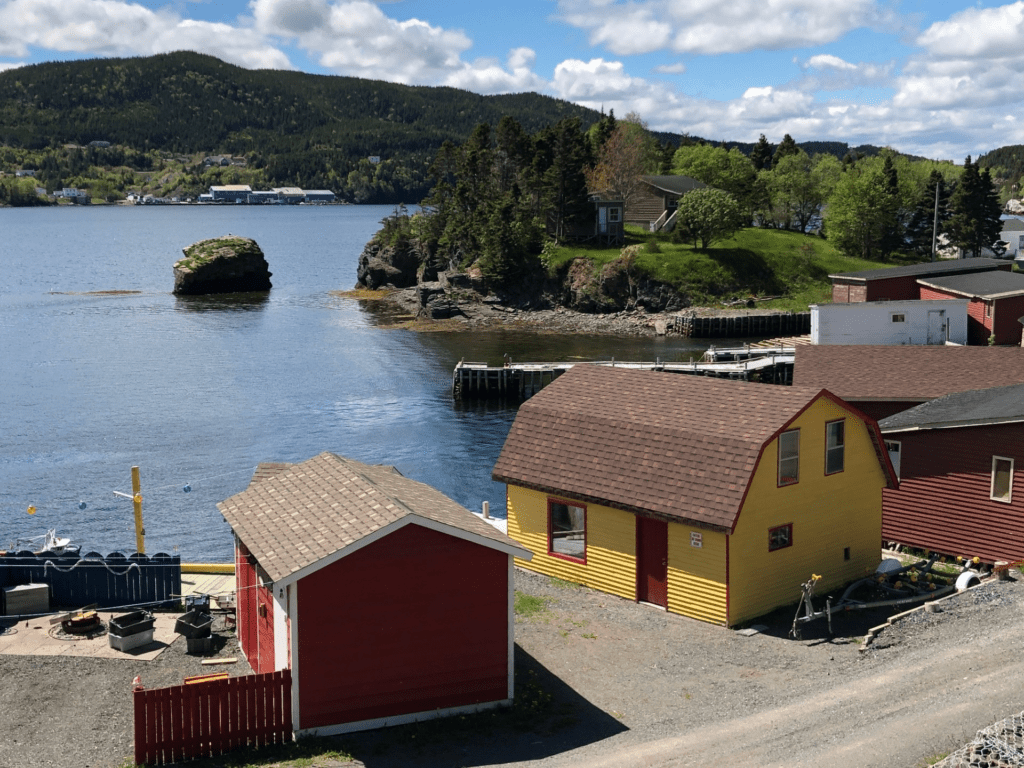
Hickman’s Harbour is an outport southeast of Clarenville, on Random Island in Trinity Bay. First settled in the 1800s, the outport’s first waymaster in 1881 was Joseph Pilley. By 1900, Hickman’s Harbour, the site of the best deep-water anchorage on the island, had become the centre of the Random Island fishing and shipbuilding industries.
Other methods of employment included sawmilling and slate mining, though the actual quarry was across the sound in Nut Cove. By 1901 Hickman’s Harbour was the most populous community on Random Island with 309 people. Hickman’s Harbour enjoys a scenic location on Random Island, surrounded by the rugged coastline and the tranquil waters of Trinity Bay.
Lower Lance Cove

Lower Lance Cove is a community on Random Island, which is partially surrounded by the Bonavista Peninsula on the north and within the confines of Trinity Bay. Lower Lance Cove was once called British Cove. The island is approximately 35 km (22 miles) long. Random Island’s first permanent settlement, Ryder’s Harbour, was founded in the 1760s. The island was visited often by many fishing expeditions. Some areas were settled starting in the 1800s.
The island’s main industries were fishing, shipbuilding, sawmilling and slate mining. For over 100 years the island could only be accessed by water but a causeway built in 1954 across Random Bar linked the island with the nearby town of Clarenville.
Petley
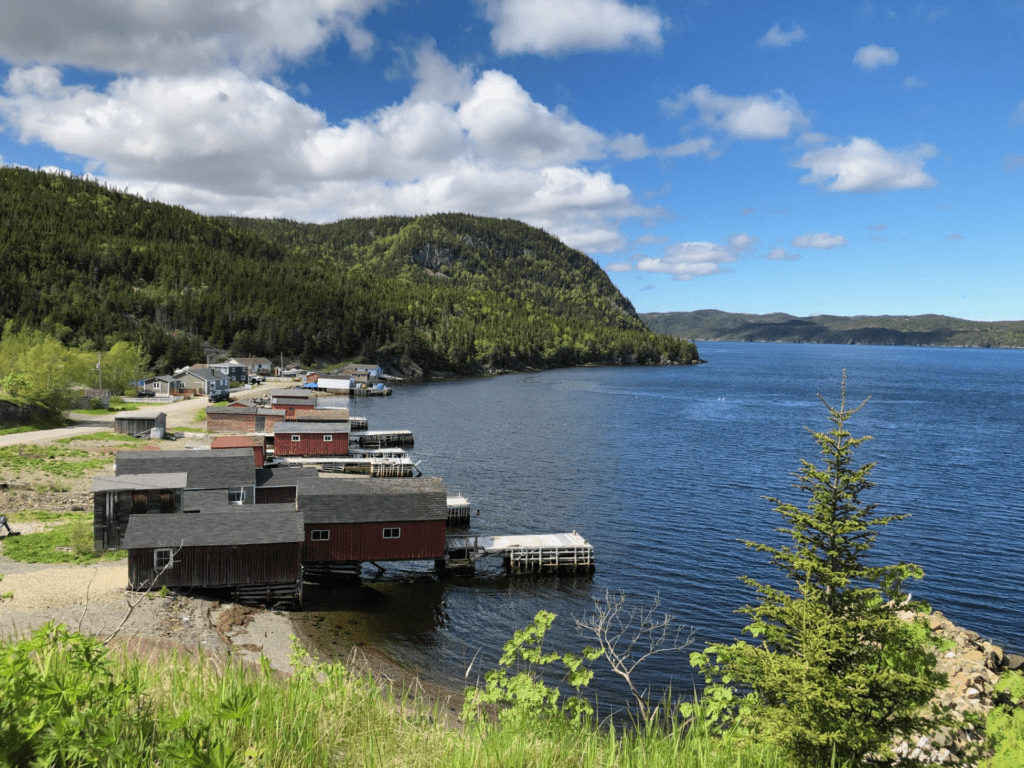
Petley is a community of about 90 people on Random Island. Random Island is partially surrounded by the Bonavista Peninsula on the north and within the confines of Trinity Bay. The island is approximately 35 km (22 miles) long. Random Island’s first permanent settlement, Ryder’s Harbour, was founded in the 1760s. The island was visited often by many fishing expeditions. Some areas were settled starting in the 1800s.
The island’s main industries were fishing, shipbuilding, sawmilling and slate mining. For over 100 years the island could only be accessed by water but a causeway built in 1954 across Random Bar linked the island with the nearby town of Clarenville.
Day 8
Conception Harbour
Conception Harbour is a town on the Avalon Peninsula of Newfoundland on Conception Bay about 70 km from St. John’s and can be accessed via Route 60. Conception Harbour includes the former communities of Bacon Cove, Cat’s Cove, Kitchuses, and Silver Spring.
The town has a history of fishing, whaling, ironworking, and tourism as its industries. In the mid-20th century, American construction companies recruited Newfoundland fishermen from this area to work the high steel because they were used to climbing the high rigging on fishing schooners and weren’t afraid of heights. The men were called “Fish” and they helped build the impressive skylines of Boston and New York City including the Twin Towers.
The many shipwrecks in the waters off Conception Harbour attract divers. In 2022, cephalopod fossils were found in Bacon Cove that potentially moved their evolutionary date back by 30 million years.
Colliers
Colliers is a town on the Avalon Peninsula on Conception Bay. According to the 2016 Statistics Canada Census, the area had a population of 654, with 424 dwellings. Colliers was considered as a preferred place for the first English settlement in North America in the early 1600s by John Guy, merchant venturer, colonizer, and first governor of the colony in Newfoundland. The area that became known as Cupers Cove (Cupids) was chosen instead.
Marysvale
Marysvale, located near Conception Bay, is home to about 400 people.
Georgetown
Georgetown is southeast of Bay Roberts in the Conception Bay Area. About 200 people call this area home.
Brigus
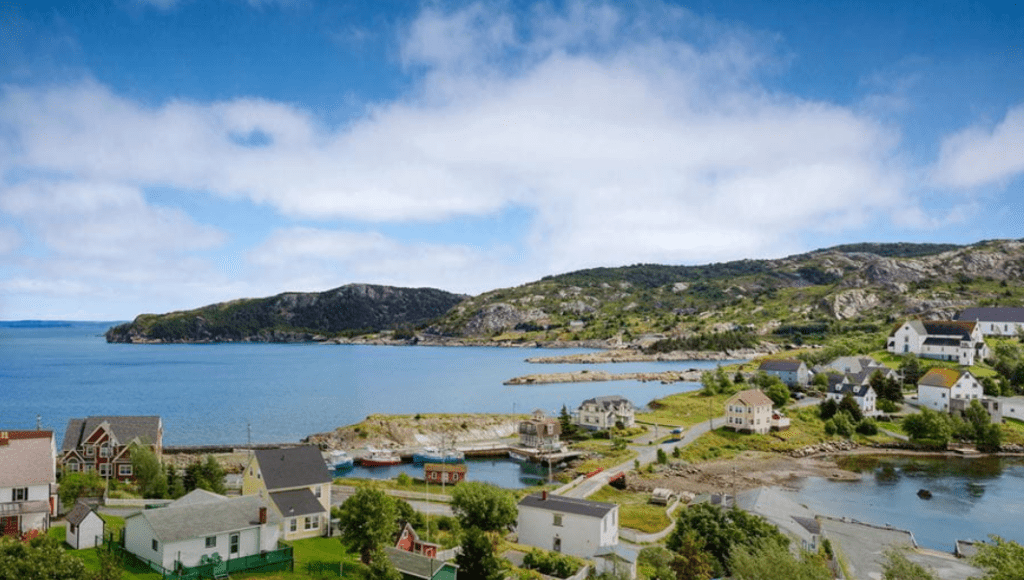
Photo credit: newfoundlandlabrador.com
The rich history of this early English settlement, which was founded in 1612, is celebrated in the architecture and people. There are archaeological sites uncovering the secrets of the past, and a three–day festival that celebrates the humble blueberry. In Brigus, you can take a leisurely hike around charming streets sloping up into green cliffs, before stopping for a slice of homemade blueberry cheesecake.
The town is a picture postcard, reminiscent of the quaintness often found in European villages. Even the name “Brigus” is derived from “Brickhouse,” an old English town, pronounced with a flavour only found in this part of North America. Around here, history thrives. The town’s well–kept old–style architecture, rustic stone walls, lush green gardens, and winding narrow lanes are reflective of its English, Irish, and Welsh heritage. Visit Hawthorne Cottage National Historic Site, the former home of Captain Bob Bartlett, hailed as the greatest ice navigator of the 20th century.
There’s more to Brigus than scenery and history. Every summer, the community bustles with activity during the annual Blueberry Festival. Over 12,000 visitors from around the world come to enjoy three days of music, traditional food, dancing, fireworks, and of course blueberries.
